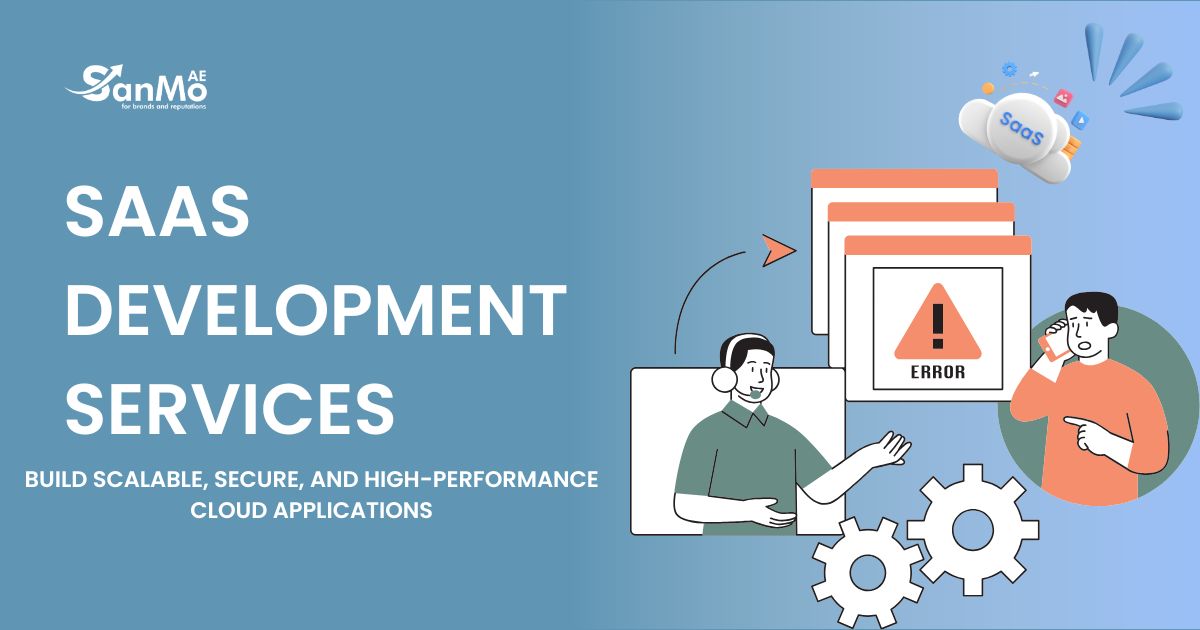Online reputation can make or break your business. One negative review, a viral complaint, or unfavorable news coverage can damage years of hard work in minutes. That’s where negative content management becomes essential.
Negative content management is the strategic process of identifying, addressing, and minimizing the impact of harmful online content about your brand, business, or personal reputation. This comprehensive approach combines monitoring, response strategies, and proactive reputation building to protect your digital presence.
This guide will walk you through everything you need to know about negative content management, from understanding its importance to implementing effective strategies that protect and restore your online reputation.
What is Negative Content Management?
Negative content management encompasses all activities aimed at controlling the narrative around your brand when unfavorable content appears online. This includes managing negative reviews, addressing false information, responding to complaints, and implementing strategies to push down harmful search results.
The practice goes beyond simple damage control. Effective negative content management involves:
- Monitoring: Tracking mentions, reviews, and discussions about your brand across all digital platforms
- Assessment: Evaluating the severity and potential impact of negative content
- Response: Crafting appropriate responses to address legitimate concerns
- Suppression: Using SEO and content marketing strategies to reduce the visibility of harmful content
- Prevention: Building a strong positive online presence that makes negative content less impactful
Why Negative Content Management Matters
Consumer Trust and Decision-Making
Research shows that 93% of consumers read online reviews before making a purchase decision. When negative content dominates your search results, potential customers form opinions before ever interacting with your business.
A single negative review can cost you up to 30 customers, while poor search results can reduce click-through rates by up to 70%. These statistics highlight why negative content management isn’t optional—it’s a business necessity.
Financial Impact
Negative online content directly affects your bottom line. Companies with poor online reputations often see:
- Decreased sales and revenue
- Higher customer acquisition costs
- Reduced employee retention
- Difficulty attracting top talent
- Challenges securing partnerships or investments
Long-Term Brand Health
Negative content can linger online for years, continuously impacting your reputation. Search engines index and store information indefinitely, making proactive negative content management crucial for long-term success.
Common Types of Negative Content
Customer Reviews and Complaints
Negative reviews on platforms like Google, Yelp, Facebook, and industry-specific sites can significantly impact your reputation. These reviews often appear prominently in search results, making them particularly damaging.
Social Media Mentions
Complaints, criticisms, and negative discussions on social media platforms can spread rapidly. The viral nature of social media means negative content can reach thousands of people within hours.
News Articles and Blog Posts
Negative press coverage, whether from traditional media or blogs, can create lasting damage. These articles often rank highly in search results due to the authority of news websites.
Fake or Misleading Information
Competitors or disgruntled individuals may spread false information about your business. This type of content can be particularly challenging to address and remove.
Legal and Regulatory Issues
Court documents, regulatory actions, and legal proceedings become part of the public record and can appear in search results, affecting your reputation even after resolution.
Developing Your Negative Content Management Strategy
Step 1: Set Up Comprehensive Monitoring
Effective negative content management starts with knowing what people are saying about you. Implement monitoring systems that track:
- Search Results: Monitor the first three pages of Google results for your brand name, key executives, and related keywords
- Review Platforms: Track all major review sites relevant to your industry
- Social Media: Monitor mentions across all social platforms, including hashtags and variations of your brand name
- News and Blogs: Use Google Alerts and specialized tools to track media coverage
Step 2: Establish Response Protocols
Create clear guidelines for responding to different types of negative content:
Immediate Response (Within 24 hours)
- Customer service complaints
- Factual errors that can be easily corrected
- Crisis situations requiring immediate attention
Planned Response (Within 72 hours)
- Complex customer issues requiring investigation
- Negative reviews that need thoughtful responses
- Media inquiries about negative coverage
Strategic Response (Within 1 week)
- Legal issues requiring consultation
- Comprehensive reputation repair campaigns
- Long-term content suppression strategies
Step 3: Create Response Templates
Develop templates for common negative content scenarios while ensuring each response feels personalized and authentic. Your templates should include:
- Acknowledgment of the concern
- Apology when appropriate
- Explanation of steps being taken
- Invitation to continue the conversation privately
- Professional, empathetic tone
Step 4: Build Your Positive Content Arsenal
Proactive content creation is crucial for effective negative content management. Develop:
- Company Blog: Regular, valuable content that demonstrates expertise
- Social Media Presence: Active, engaging profiles that showcase your brand personality
- Customer Success Stories: Testimonials and case studies that highlight positive experiences
- Media Coverage: Pursue positive press opportunities and thought leadership pieces
- SEO-Optimized Content: Content specifically designed to rank well for your brand terms
Best Practices for Responding to Negative Content
Respond Quickly and Professionally
Speed matters when dealing with negative content. Quick responses show that you care about customer concerns and are actively managing your reputation. However, never sacrifice quality for speed—a poorly crafted response can make situations worse.
Take Responsibility When Appropriate
When negative content highlights legitimate issues, take responsibility and outline concrete steps for improvement. This approach often turns critics into advocates and demonstrates your commitment to customer satisfaction.
Don’t Engage in Arguments
Avoid getting into public arguments or defensive exchanges. These interactions often escalate situations and create more negative content. Instead, acknowledge concerns and invite further discussion through private channels.
Provide Value in Your Responses
Use responses to negative content as opportunities to provide value to other readers. Address common concerns, clarify misconceptions, and demonstrate your expertise and commitment to customer service.
Know When Not to Respond
Not every piece of negative content requires a response. Sometimes, responding can give more attention to negative content than it would otherwise receive. Consider factors like:
- The source’s credibility
- The potential reach of the content
- Whether the content contains factual errors
- The likelihood of productive dialogue
Advanced Negative Content Management Techniques
Search Engine Optimization (SEO) for Reputation
Use SEO strategies to promote positive content and suppress negative content in search results:
- Keyword Optimization: Optimize positive content for brand-related keywords
- Content Multiplication: Create multiple pieces of positive content around the same topics
- Link Building: Build high-quality backlinks to positive content about your brand
- Local SEO: Optimize for local searches if you’re a location-based business
Content Suppression Strategies
While you can’t delete negative content from third-party sites, you can work to reduce its visibility:
- Create High-Quality Content: Develop authoritative content that can outrank negative content
- Leverage High-Authority Platforms: Use platforms like LinkedIn, Medium, and industry publications
- Optimize Existing Content: Improve the SEO of existing positive content
- Social Media Amplification: Use social media to promote positive content and improve its search rankings
Legal Considerations
Understand when legal action may be appropriate:
- Defamatory Content: False statements that damage your reputation
- Copyright Infringement: Unauthorized use of your content or images
- Fake Reviews: Reviews that violate platform terms of service
- Privacy Violations: Content that violates privacy laws
Always consult with legal professionals before pursuing legal action, as litigation can sometimes create more publicity for negative content.
Tools and Resources for Negative Content Management
Monitoring Tools
- Google Alerts: Free tool for basic monitoring
- Mention: Comprehensive social media and web monitoring
- Brand24: Real-time monitoring with sentiment analysis
- ReviewTrackers: Specialized tool for review monitoring
Response Management
- Hootsuite: Social media management and response tools
- Sprout Social: Comprehensive social media management platform
- Grade.us: Tool for managing and responding to reviews
- Reputation.com: Complete reputation management platform
Content Creation and SEO
- SEMrush: Comprehensive SEO and content marketing tools
- Ahrefs: Backlink analysis and keyword research
- BuzzSumo: Content research and social media analytics
- Canva: Visual content creation for social media and marketing
Measuring Success in Negative Content Management
Key Performance Indicators (KPIs)
Track these metrics to measure the effectiveness of your negative content management efforts:
- Search Result Rankings: Monitor where negative content appears in search results
- Review Scores: Track average ratings across review platforms
- Social Media Sentiment: Measure the tone of social media mentions
- Brand Mention Volume: Monitor the quantity of brand mentions over time
- Website Traffic: Track how reputation issues affect website visits
- Conversion Rates: Measure the impact on sales and lead generation
Regular Reporting and Analysis
Create monthly reports that include:
- Summary of negative content addressed
- Response times and resolution rates
- Changes in search result rankings
- Trends in customer sentiment
- Recommendations for strategy adjustments
Building Long-Term Reputation Resilience
Proactive Reputation Building
The best defense against negative content is a strong positive online presence. Consistently create valuable content, engage with customers, and build relationships with media and influencers in your industry.
Customer Experience Focus
Many negative content issues stem from poor customer experiences. Invest in improving your products, services, and customer support to reduce the likelihood of negative content being created.
Crisis Preparedness
Develop crisis communication plans that outline how you’ll respond to major reputation threats. Having prepared responses and escalation procedures can help you respond more effectively when serious issues arise.
Team Training
Ensure your team understands the importance of negative content management and knows how to respond appropriately. Regular training sessions can help prevent minor issues from becoming major reputation problems.
Your Next Steps in Negative Content Management
Effective negative content management requires ongoing attention and strategic thinking. Start by implementing monitoring systems and response protocols, then gradually build your positive content presence and suppression strategies.
Remember that reputation management is a marathon, not a sprint. Consistent effort over time will yield the best results and help protect your brand from future reputation threats.
Consider partnering with reputation management professionals if you’re dealing with serious negative content issues or lack the internal resources to manage your online reputation effectively. The investment in professional help often pays for itself through improved customer acquisition and retention.
To enhance your overall digital presence, it’s important to not only understand how to master negative content management but also apply techniques from advanced video SEO to ensure your brand remains both visible and credible online.








